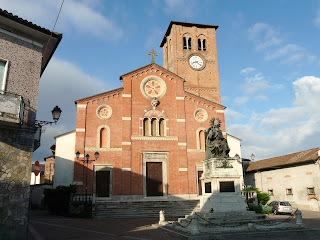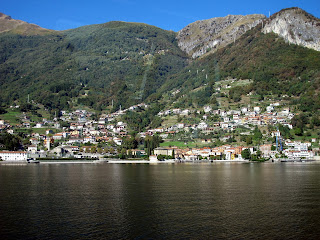Communist leader Mussolini could not gag
 |
| Antonio Gramsci |
Antonio Gramsci, one of the more remarkable intellectuals of left-wing Italian politics in the early 20th century, died on this day in 1937 in Rome, aged only 46.
A founding member and ultimately leader of the Italian Communist Party (PCI), he was arrested by Benito Mussolini's Fascist regime in November 1926 and sentenced to 20 years' imprisonment. In failing health, he was granted his release after a campaign by friends and supporters but died without leaving the clinic in which he spent his final two years.
The conditions he encountered in jail led him to develop high blood pressure, angina, tuberculosis and acute gastric disorders. Yet he found sufficient energy while imprisoned to study the social and political history of Italy in extensive detail and to record his thoughts and theories in notebooks and around 500 letters to friends and supporters.
Many of his propositions heavily influenced the political strategy of communist parties in the West after the Second World War following the publication of his Prison Notebooks.
Gramsci was born in January 1891 in the small town of Ales, in a mountainous inland part of
Sardinia about 70 kilometres north of Cagliari. His father, originally from
Gaeta in Lazio, was a local government official who was himself imprisoned after being found guilty of embezzlement in 1898.
Despite his family falling into poverty without his father's income, Gramsci excelled at school, eventually winning a scholarship to the University of
Turin, where he studied linguistics. Turin was becoming industrialised at the time, with the Fiat and Lancia factories recruiting workers from poorer regions. As trade unions became established, Gramsci became politically active, joining the Italian Socialist Party (PSI) in late 1913.
His health was already a concern. His growth was stunted, apparently the result of being dropped as a child, and living on a poor diet in damp, unheated lodgings in Turin left him with respiratory problems. Yet on leaving university he moved into journalism and pursued his career with vigour, becoming one of the most influential left-wing writers, hugely admired by those on his side of the political divide but regarded as a dangerous figure by those with leanings to the right.
 |
Antonio Gramsci is buried in the
Protestant Cemetery in Rome |
In 1921 he left the PSI to join the Communists and spent a year and a half living in Moscow, where he had travelled as a representative of his new party. It was in Moscow that he met and married Julka Schucht, a violinist and member of the Russian Communist Party. They had two sons, Delio, who died in 1981, and Giuliano, who was born in 1926 and still lives in Moscow.
Meanwhile, the Fascist advance in Italy was gathering strength and Gramsci, outspoken in his opposition to Mussolini, returned to Italy with the intention of rallying the forces of the left in a united front. In 1924, by then recognised as head of the PCI, he was elected to parliament as a deputy for the Veneto.
Mussolini's strategy with political opponents was to intimidate them and many members of the PCI were arrested. Gramsci escaped at first through political immunity but after the Fascists introduced new laws in 1926 he also was arrested.
At his trial, the Fascist prosecutor's attitude to Gramsci was clear. "For twenty years we must stop this brain from functioning," he said. It was somewhat ironic, then, that while Gramsci's mental faculties never faltered, it was his body that failed him.
He was moved from prison in Turi, near Bari, to a clinic in Rome in 1935. When the campaign for his freedom succeeded, his intention was to return to his native Sardinia. He was due to be released on 21 April, 1937, but was too ill to make the journey and died a few days later from cerebral hemorrhage.
 |
The striking Campus Luigi Einaudi was designed for the
University of Turin by Foster + Partners |
Travel tip:
Although the University of Bologna predates it by more than 300 years, the
University of Turin, founded in 1404, is one of the oldest universities in Europe. Situated within walking distance of the centre of the city, the university's older buildings off Via Po date back to the 18th century. They contrast with the ultra-modern faculty of Law and Political Science at the Campus Luigi Einaudi on Lungo Dora Siena, designed by Foster + Partners, the firm headed by Lord Norman Foster.
Travel tip:
Cagliari, the capital of Sardinia, was Italy's Capital of Culture for 2015. The city contains fragments of a history spanning Carthaginian, Roman, Byzantine and Spanish eras. The most popular sights include the Basilica of Our Lady of Bonaria and the Cathedral of Santa Maria.
(Picture of Gramsci's grave by Piero Montesacro CC BY-SA 3.0)
Home










